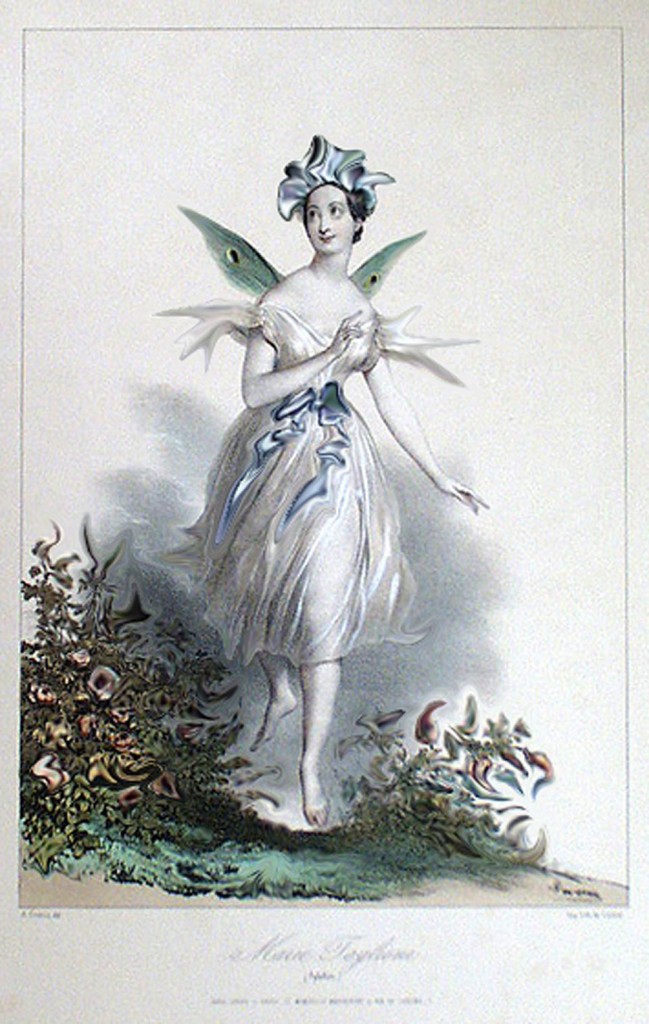Maria Porges
One day not long ago, I heard a ballet historian on the radio talking about Marie Taglioni, an extraordinary 19th century ballerina. Apparently, she looked quite different from the ethereal dancers of today—or her contemporaries. She was plain; her shoulders rounded and asymmetrical, and her calves were—well– massive. Modern toe shoes (which end in a rigid box that supports a dancer’s weight when she goes on point) hadn’t been invented yet, as this approach to ballet was in its infancy. The soft shoes of Taglioni’s time meant that, of necessity, she bore her own weight on the extreme upper edge of the balls of her feet– an athletic feat that developed her leg muscles tremendously. She did it, however, with grace and elegance, unlike others who were experimenting with this new acrobatic approach. Curious about her appearance, I began to look for images of her that very afternoon. Many, like this one, show her barefoot; floating in midair, in something diaphanous. (I confess to having twisted the pixels of this particular print, adjusting various parts of her costume for my own enjoyment.) Note the delicacy of her hands and feet; the softness of her upper body; and the definition and substantial size of her adductors and gastrocnemius muscles. I wish I could have seen her, dressed like a sprite or a peasant girl, leaping across a stage. Like other athletic achievements that predate modern scientific training methods (as well as modern supplements, drugs and superhuman standards) Taglioni’s success: her extraordinary defiance of gravity and seemingly effortless grace, are all the more meaningful to me.


